Hollywood has romanticized Dodge City as the end-of-the-trail town where the cattle drives of the Romantic era paid off drovers at the railhead, creating the “end of the trail” escapades that made cowboy lore famous.
Cattle were loaded in rail cars headed to the packing centers of the day, Chicago and Kansas City, to provide beef for a growing Eastern nation.
History shows a legendary marshal named Wyatt Earp came to bring law and order to the rough town. As time went on, the region took its place as another vital piece of the beef industry with the birth of the feeding industry.
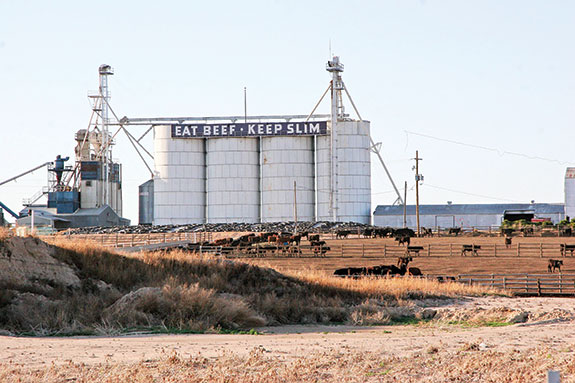
Water, grain and weather
The region offered an opportunity to those willing to take a chance and developed feedyards because of the resources available.
Irrigation helped develop a relatively cheap feed resource at the time and the rest, as they say, is history.
“Improvements to irrigation and a good climate helped create the feed supply, and at the time, most could add value to the grain by feeding cattle.
It also increased the value of the cattle,” Sam Hands of Triangle H Feedyard in Garden City, Kansas, says. Triangle H was established in 1974 by the Hands family.
“The abundant feed supply helped to naturally create the feeding industry. Grain wasn’t that high at the time, and it made sense to market it through the cattle,” Brian Price, manager of Brookover Feedyard, says.
This feedyard on the northwest edge of Garden City often gets credit as being a pioneer in the industry, starting in 1951.
“It just made sense in the ’70s for the feeding industry to start popping up here because of the available feed resources,” Danny Herrmann, who runs his family’s Ford County Feeders in Ford, Kansas, says.
Like the rest of the beef industry, certain elements of the production cycle cannot be controlled; however, the climate in the region also made it very conducive to feed cattle.
The region’s weather patterns offered an advantage to some of the other traditional feeding areas.
“When we do get weather, usually in the early spring, it doesn’t last that long. Farther north it can be a problem at times,” Herrmann says.
“We have had blizzards where the snow was so high the cattle were just walking over the bunks, and that makes for a long day.”
“It’s a semi-arid region, we have less humidity and less weather which, coupled with the grain supply, gives us an advantage feeding cattle compared to some of the other areas where cattle are fed,” Hands says.
“We have a dry climate which helped the industry grow,” 30-year veteran Price says. “One of our main challenges was we were a little removed from some of the cow-calf regions, and transporting the cattle here can cause its own set of problems.”
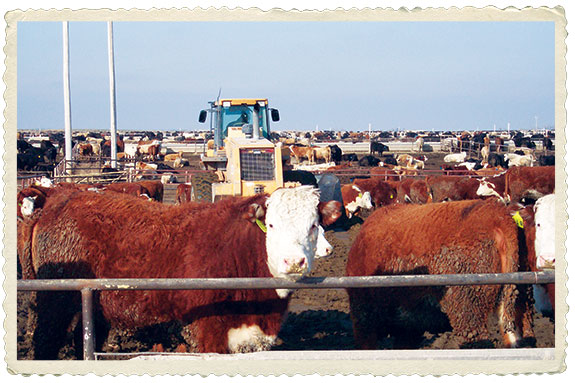
A boost from packers
A readily available feed supply and good climate were only part of the equation when it came to making the industry a vital part of today’s industry.
One element was missing in the early years, and the packing industry realized it had to relocate from the more traditional venues of the time.
Most feel this was the final step to establishing the region as a true feeding center.
“When the packers came to the region, it definitely gave the industry a boost,” Hands says. “The packers were the final piece to the industry in the region because we need them to buy the finished product.”
“Once there were enough feedyards, the packing industry moved to western Kansas,” Herrmann says. “It helps to have two packing plants within 15 miles of the feedyard.”
“We needed the packing industry to come to western Kansas because we had an abundant feed supply, good labor resources and our climate advantage,” Price says. “It helped make this end of the industry profitable at the time.”
Every industry faces challenges or evolves. With the arrival of the packing industry, it gave way to change. Technology and producer agreements changed the way business was traditionally done.
“The way we sell fats has changed drastically in the last 28 years I have been involved in the industry. We sell more grid and formula cattle today, but price discovery is still what we’re trying to achieve,” Herrmann says.
“We use laptop computers to read bunks and everything is equipped with GPS. We are constantly gathering information and tracking consumption.
Our batchers in the feed mill are all computer-generated, which allows us to adjust rations quickly and be more accurate.”
“Thirty years ago when I started, we marketed 100 percent on the cash market. Today, we sell less than 20 percent of the cattle this way.
Producer agreements and packer grids that try to find value for the better cattle gave way to this form of marketing,” Price says.
“Steam-flaking helped us make more efficient use of corn. Computers helped us eliminate hand-written records, and we can make more properly formulated rations because the batching systems are computerized.”
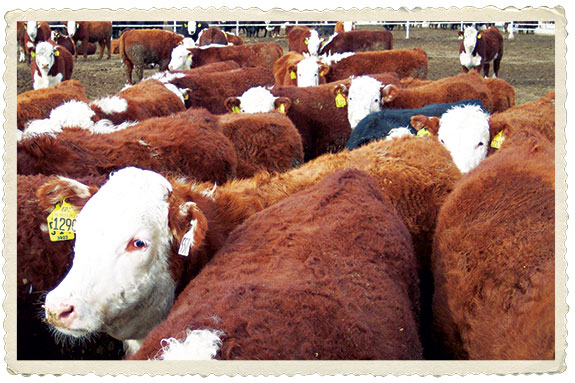
New tools and inventions
A new way of marketing also gave the cow-calf producer better tools to produce cattle that are acceptable in the industry.
Just like any other industry, a consistent supply of raw materials is needed to create a finished product.
“We market more cattle on the rail today than we did in the past, and it changed the type of cattle.
The everyday beef producer of the previous century didn’t have the tools available to make cattle better.
They were limited to visual appraisal and had no idea what the end product would be,” Hands says. “Today, we harvest a younger 1,400-pound steer that at one time would have been big at 1,100 pounds.
Producers have the tools to add predictability to cattle. We have to do our part in the feeding industry to take advantage of those improvements.”
“The cow-calf side is trying to do a better job and take advantage of tools like ultrasound to make a better product. Cattle have gotten bigger.
Heifers used to be fat at 950 pounds; today she is 1,200 or 1,300 pounds, and steers that were 1,200-pound fats, weigh 1,400 pounds,” Herrmann says.
“Producer agreements have narrowed the targets, but the target we need to hit is still moving. We need choice and select cattle because consumer demand is different. Based on the choice-select spread, certain times of the year, cattle have different value.”
“We have learned to recognize all cattle aren’t the same. Some have more value than others, and we have to learn the value of what we’re buying,” Price says.
“Used to be, a steer that gained 4 pounds per day was a big deal; today, if they don’t gain 4 pounds per day, it’s hard to make it work. The grids made it where every animal had to stand on its own merit to find value.”
Raising the bar
Genetic improvement is the goal of most cow-calf operations. These improvements and changes to the marketing system helped programs like Beef Quality Assurance (BQA) protocols take hold in the industry. New standards have helped the feeding industry capture more value.
“It has to go back to the folks producing the calves. BQA programs have helped us get better at what we’re doing. There are progressive ways of handling cattle, and we can create a better product,” Price says.
“We’re equipped with husbandry skills today we may not have thought about 30 years ago, when I started, that have an effect on carcass.
The changes cow-calf producers can make are slow, but we’re trying to build an animal that is harvest-ready at 14 to 18 months old, doesn’t get sick, has good conversions, can handle the weather and still fit the market system.”
“BQA programs are a good deal. Anytime we can get information out there where people are learning, it’s a positive,” Herrmann says.
“These programs reinforced our beliefs on handling and vaccination protocol. If producers, through BQA programs, can give cattle a better chance of being healthy when they get here, it’s good for the industry.”
“A lot of effort has been made with checkoff dollars through programs like BQA. Cow-calf producers have better tools to manage those genetics, and there is information available to help,” Hands says.
“It wasn’t that long ago we produced what we could and let the packer sort it out. Today, we have tools to know what that end product is and can make improvements.”
Technology has not only brought improvements to what happens at the feedyard, but it has also helped facilitate information exchange.
Changes to the packing industry has helped provide what most would hope is a more consistent grading system and made information more readily available. Producer agreements may have been the step needed to link it all together.
“The theory with instrument grading is that it has made the grading system more consistent at the packer level and made computerized carcass data more readily available,” Hands says.
“The cow-calf producers and other segments of the industry are linked together through alliances. This form of networking has facilitated information exchange.”
“Technology has helped influence information exchange. Anytime we can get information back to the cow-calf level, I think it helps the industry.
It takes several years of data to make necessary changes,” Herrmann says. “The health craze of the ’80s took all the fat off the cattle.
I think it took the taste and tenderness, too. The choice grids of the time were a signal to create a better product, and it helped start that flow of information.”
“There is something you can learn by feeding cattle that you don’t learn until you do it,” Price says. “Cell phones have made us available 24 hours a day, and we can share a lot more information.
Markets are more real-time, and producers can take advantage of risk-management tools that may not have been so readily available a few years ago.”
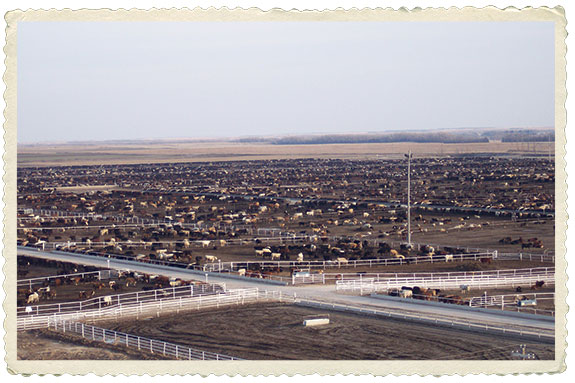
Wrangling red tape
Most industries have had to face the challenge of being more highly regulated.
Opponents of agriculture or those that do not have a full understanding of the business have set down rules for the industry to follow.
Most have been good changes; however, like most industries, the fear of over-regulation exists.
“These things have all changed over the years. Some regulations are good, and some just add to what we do on a daily basis.
We have to pay attention to who comes to the feedyard because there are a lot of people who really don’t understand all the good we do,” Price says.
“We’re more knowledgeable about how we spread manure on the land. Most of these regulations have been put in place to protect the environment and hold our employees more accountable.”
“Most of the regulations were put in place to keep us out of trouble, but there is a fine line between trying to regulate what we do and over-regulate,” Herrmann says.
“My dad always had a ‘do the right thing’ attitude. Outsiders don’t understand that this is our livelihood, and if we don’t take care of the land, we won’t be in business. The outsiders are trying to preserve a way of life without knowing we have already taken steps to preserve it.”
“It’s a challenge to keep up with all the regulations because somebody has distrust of what we’re doing and how we’re taking care of the land,” Hands says. “It’s frustrating getting told how to do business, when they don’t understand our business.”
As times changed, employee meetings about proper handling and other regulations have become more the norm. Protocols have been put forth that model feedyards after big business.
“It concerns me today’s labor force values things a little differently, and finding the next generation of workers to take care of animals is proving difficult.
We have safety regulations that protect workers from accidents and themselves. I have had to hire safety and compliance personnel, which was unheard of 30 years ago, but other industries have also adopted this practice,” Price says.
“One of my biggest challenges is maintaining a labor force, keeping them trained and maintaining the standards of what we do.
The lack of an experienced labor force has us one step closer to what our opponents call a factory farm. A lot of people who don’t have anything to with our industry voice an opinion about our business.”
“When people come to work, they aren’t always trained, but I have the ability to train them,” Herrmann says.
“The pharmaceutical companies train us on handling their products, and we have safety meetings that we didn’t have when I started in the business. It’s a good thing because it helps the safety and efficiency of the operation.”
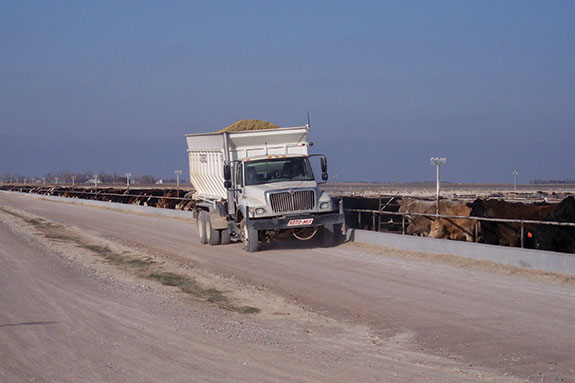
What lies ahead
Change is the one word we do not like to hear in agriculture.
The nature of feeding cattle leads to evolution of the business.
Other segments of the industry have embraced the challenge to provide a standardized raw material.
Recent weather patterns, low cow numbers and high grain prices have provided unique challenges to the industry.
With fertile ground and the infrastructure in place, the feedyard industry is still at home in western Kansas.
The final stage before harvest is not an easy job, but most realize a vital part of the production chain. Producer agreements have helped bond other segments with the feeding industry, and time will tell if cattlemen can continue to feed a growing population.
A drive through western Kansas will give most cattlemen a whole new perspective.
“The expectations of our industry have risen over time. We have to be good stewards of the land and husbandry skills are important,” Price says. “As the industry has progressed, we have become more aware of things.”
“Beef production is a byproduct of the land. The pork and poultry industries are more vertically integrated and monitored from consumption to consumer.
These industries are extremely efficient,” Hands says. “Beef is a little different product because it’s more highly sought after because of flavor and taste. It’s drastically different from a production standpoint because it takes 30 months between conception and consumer.”
“We need the packing industry because there are four of them and a lot of feedyards. To be successful in the feeding industry, it’s going to take all the segments working together.
There is sometimes a trust issue between the cow-calf sector, the feedyards and the packers,” Herrmann says.
“Producer agreements like Certified Hereford Beef and Certified Angus Beef link the industry together and share information. These agreements help ease these concerns and bring the segments together with one goal in mind.” ![]()
Clifford Mitchell is a freelance author based in Oklahoma.
PHOTOS
TOP: A feedyard in Garden City, Kansas promotes the healthy appeal of beef from its storage silos. Photo by Paul Marchant.
PHOTO 2: A welcoming weather climate was a key factor in the growth of feedyards, such as Ford County Feeders, in western Kansas.
PHOTO 3: Western Kansas provides the climate, feed and culture for today’s feedlot business.
PHOTO 4: Ford County Feeders uses laptop and GPS technology to read bunks and track consumption in the bunks. Photos courtesy of Danny Herrmann.






